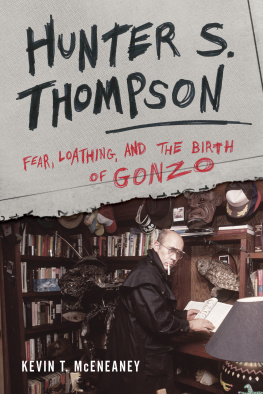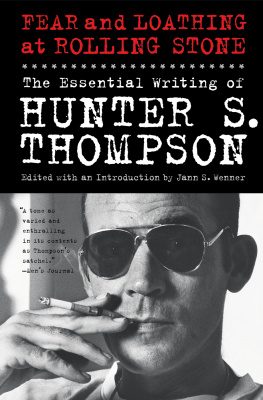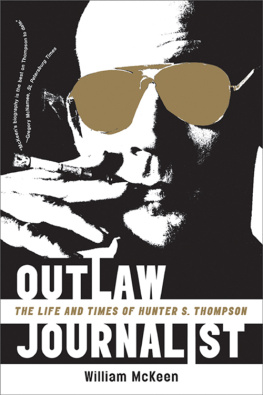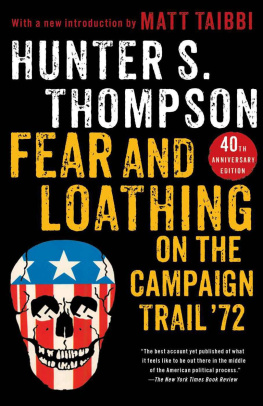Peter Richardson - Savage Journey: Hunter S. Thompson and the Weird Road to Gonzo
Here you can read online Peter Richardson - Savage Journey: Hunter S. Thompson and the Weird Road to Gonzo full text of the book (entire story) in english for free. Download pdf and epub, get meaning, cover and reviews about this ebook. year: 2022, publisher: University of California Press, genre: Detective and thriller. Description of the work, (preface) as well as reviews are available. Best literature library LitArk.com created for fans of good reading and offers a wide selection of genres:
Romance novel
Science fiction
Adventure
Detective
Science
History
Home and family
Prose
Art
Politics
Computer
Non-fiction
Religion
Business
Children
Humor
Choose a favorite category and find really read worthwhile books. Enjoy immersion in the world of imagination, feel the emotions of the characters or learn something new for yourself, make an fascinating discovery.
- Book:Savage Journey: Hunter S. Thompson and the Weird Road to Gonzo
- Author:
- Publisher:University of California Press
- Genre:
- Year:2022
- Rating:5 / 5
- Favourites:Add to favourites
- Your mark:
Savage Journey: Hunter S. Thompson and the Weird Road to Gonzo: summary, description and annotation
We offer to read an annotation, description, summary or preface (depends on what the author of the book "Savage Journey: Hunter S. Thompson and the Weird Road to Gonzo" wrote himself). If you haven't found the necessary information about the book — write in the comments, we will try to find it.
Savage Journey is a supremely crafted study of Hunter S. Thompsons literary formation and achievement. Focusing on Thompsons influences, development, and unique model of authorship, Savage Journey argues that his literary formation was largely a San Francisco story. During the 1960s, Thompson rode with the Hells Angels, explored the San Francisco counterculture, and met talented editors who shared his dissatisfaction with mainstream journalism. Peter Richardson traces Thompsons transition during this time from New Journalist to cofounder of Gonzo journalism. He also endorses Thompsons later claim that he was one of the best writers using the English language as both a musical instrument and a political weapon. Although Thompsons political commentary was often hyperbolic, Richardson shows that much of it was also prophetic.
Fifty years after the publication of Fear and Loathing in Las Vegas, and more than a decade after his death, Thompsons celebrity continues to obscure his literary achievement. This book refocuses our understanding of that achievement by mapping Thompsons influences, probing the development of his signature style, and tracing the reception of his major works. It concludes that Thompson was not only a gifted journalist, satirist, and media critic, but also the most distinctive American voice in the second half of the twentieth century.
Peter Richardson: author's other books
Who wrote Savage Journey: Hunter S. Thompson and the Weird Road to Gonzo? Find out the surname, the name of the author of the book and a list of all author's works by series.










